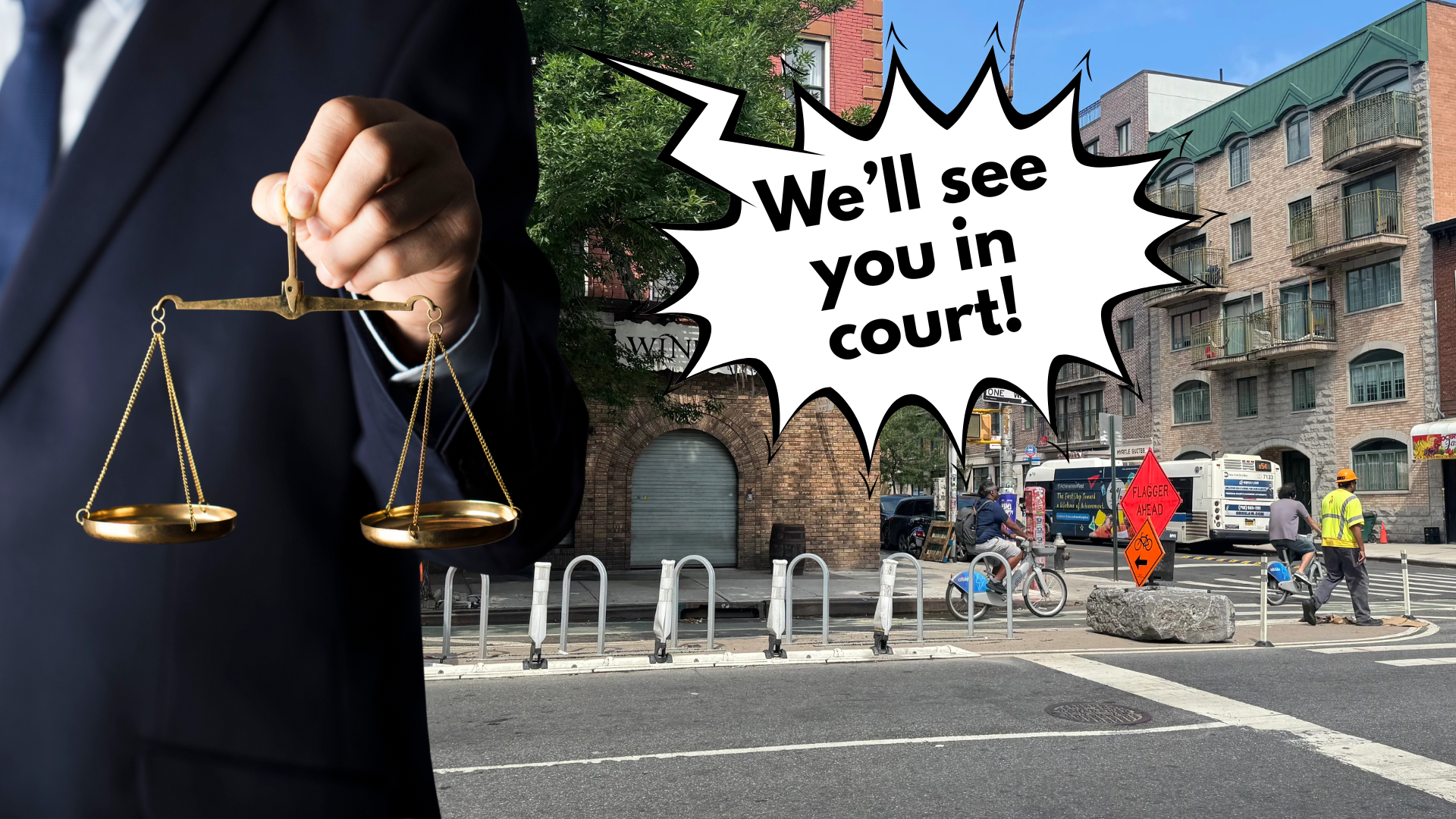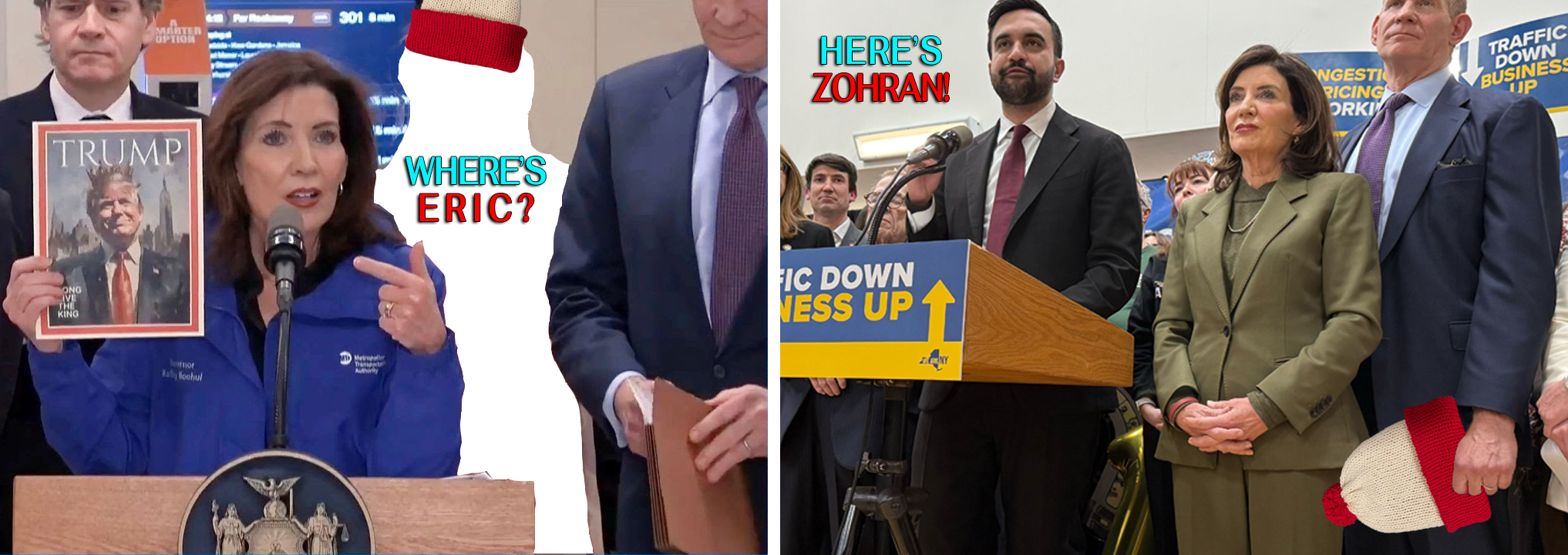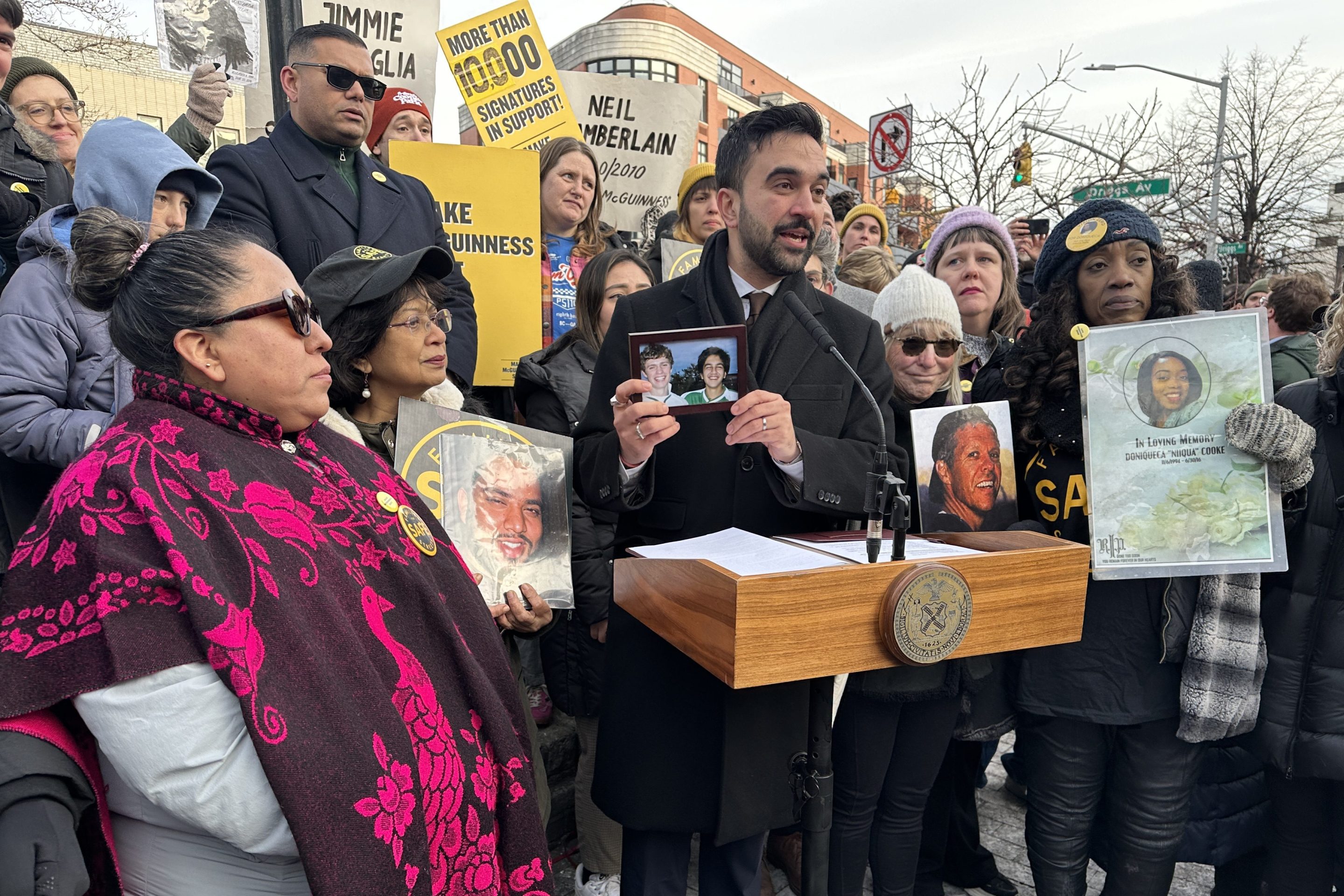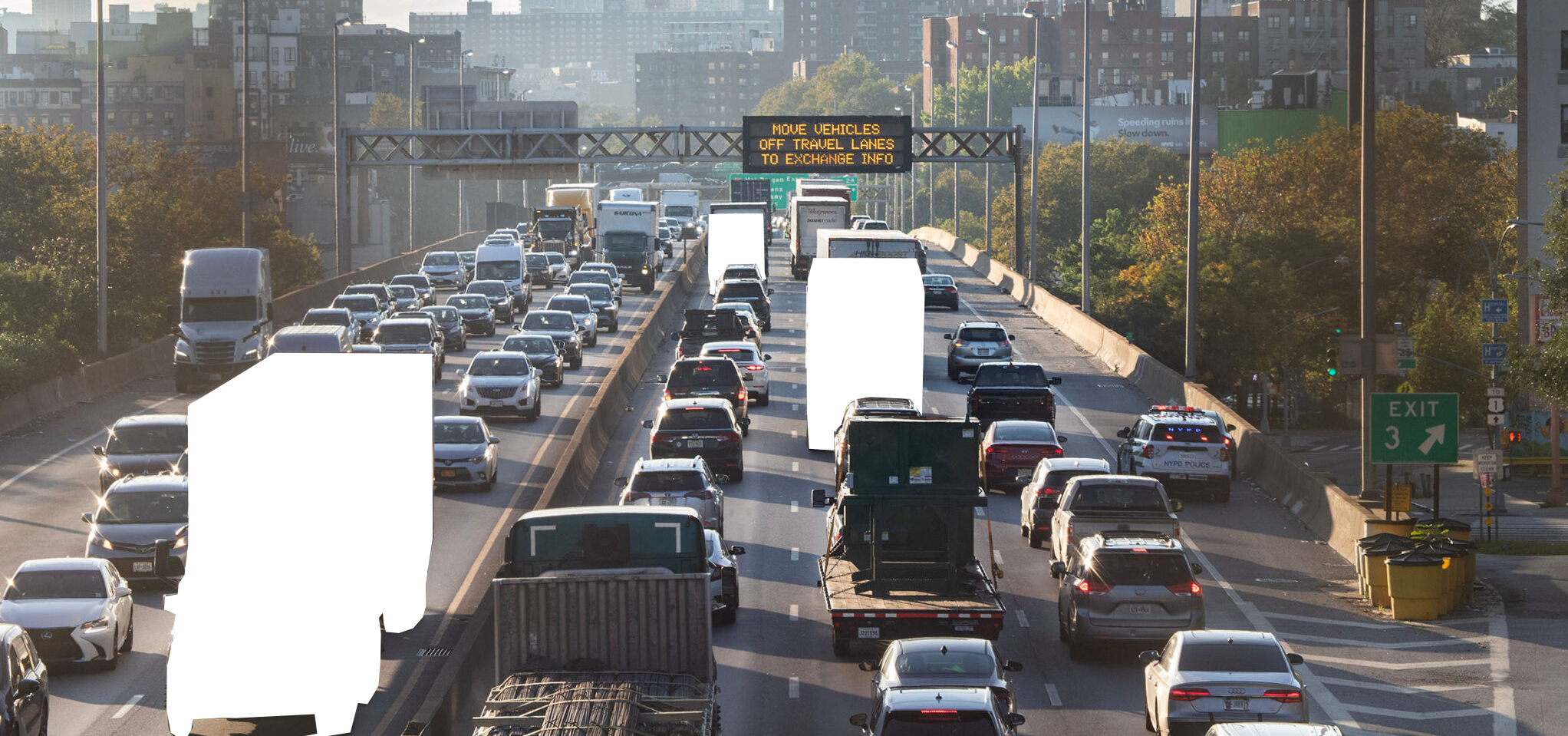They’re putting the mayor on notice.
Cyclists and their loved ones are pledging to sue the city if they are killed or injured on the stretch of Bedford Avenue where Mayor Adams is preparing to rip up three blocks of protected bike lanes.
Signatories to the pledge promise to “pursue all available legal remedies against the City and Mayor Adams to hold them accountable for preventable injuries or loss of life" on Bedford Avenue.
The pledge has over 200 signatures and counting. Transportation Alternatives and activists sent the pledge to City Hall as a letter on Tuesday morning.
Adams is moving ahead with his plans to remove the protected bike lane atfer politically connected Brooklyn judge Carolyn Walker-Diallo ruled he could last week. Walker-Diallo sided with the city's argument that changing a bike lane from protected, back to unprotected, did not constitute a "removal" under city law requiring notification of any such changes.
The mayor's office told Streetsblog that his record "speaks for itself" defended his decision as responsive to the community's "unique needs and concerns."
"There’s no one-size-fits-all solution," City Hall spokesperson Sophia Askari said. "That’s why, after conversations with the community around Bedford Avenue about serious safety concerns — including multiple incidents involving children — we’ve made the decision to reconfigure the bike lane while still keeping safety measures in place."
The pledge from cyclists represents a commitment to take legal action against the city if something were to happen on Bedford Avenue after the city moves to knowingly make the roadway less safe (construction is set to start on Tuesday, judging by no-parking signs put up in the area).
New York's court of appeals ruled in 2017 in the case of Turturro v. the City of New York that municipalities can be held liable for failing to redesign streets with a history of traffic injuries and reckless driving.
A potential case surrounding an injury or death on Bedford Avenue could be even stronger, Beadle said, because the city already installed safety measures and recorded data proving the redesign was working before plans to revert to the unsafe design.
“I think that case has applicability. But, like all legal cases, the devil is in the details,” said Beadle. “In this case, the city not only studied and came up with a plan, they implemented it, then gathered data proving that this new design made the street dramatically safer, and then chose to remove it.”
Supporters of the Bedford Avenue project see his decisions on Bedford Avenue as purely political, with his re-election on the line in November.
“This whole situation is extremely frustrating, because it's very clear that this is more about the mayor placating the South Williamsburg voting block than it is about trying to advance smart policy and keep people safe,” said Alex Morano, an organizer of the pledge and a volunteer chair with Transportation Alternatives, which sued the city to stop the bike lane removal.
The mayor is running a long-shot campaign for re-election as an independent against Democratic Party nominee Zohran Mamdani, fellow independent Andrew Cuomo and Republican nominee Curtis Sliwa.
After Walker-Diallo initially blocked the DOT from removing the bike lane until Aug. 6, attorney and former Brooklyn Democratic Party Chair Frank Seddio intervened on behalf of two plaintiffs in Williamsburg's Hasidic community and sped up the case. He told Streetsblog after the hearing that he took the case at the behest of "rabbis" in the "upper echelons of the city."
To Morano, the Bedford Avenue situation is just the tip of the iceberg with Mayor Adams, who has shown a disregard for the lives of New Yorkers when it comes to street safety, but also immigration, housing and standing up to Trump, he said.
“This can sound kind of hysterical, but the mayor really doesn't care about the lives of New Yorkers,” Morano said. “He's willing to play ball with New Yorkers' lives if he thinks it helps him politically. There's a much larger pattern too, like how he’s embracing ICE to terrorize immigrant communities.”
Knowingly making Bedford less safe
The activists' pledge cites the Department of Transportation’s own materials that show a dramatic safety improvement on that section of Bedford Avenue since the protected bike lane went in.
A presentation given by the DOT uncovered during the legal proceedings boasted a 47 percent decline in injury causing crashes. The city-produced document also explicitly warned removing the protected bike lane, the city "risks legal liability."

Before DOT converted the bike lane from unprotected to protected last year, Bedford Avenue was in the top 10 percent of dangerous streets in the city.
“They absolutely are reducing the safety [of the street], there's no question,” said Peter Beadle, the lawyer who represented Transportation Alternatives and the plaintiffs in the case against the city. “They're doubling the chance of serious injury or death on that street by doing what they're doing, which was our argument to the court, and why this isn't rational.”
The protected bike lane remained in place on Bedford Avenue as of Monday night. But in places where the mayor has outright stalled street redesigns in favor of special interest groups, people have died.
On Third Avenue in Sunset Park last Friday a hit-and-run driver struck and killed Kex Un Chen, 80, and Faqui Lin, 59 on a portion of the street that was set to get safety improvements until the mayor intervened and halted the project on behalf business interests in the area and the Brooklyn Chamber of Commerce.






